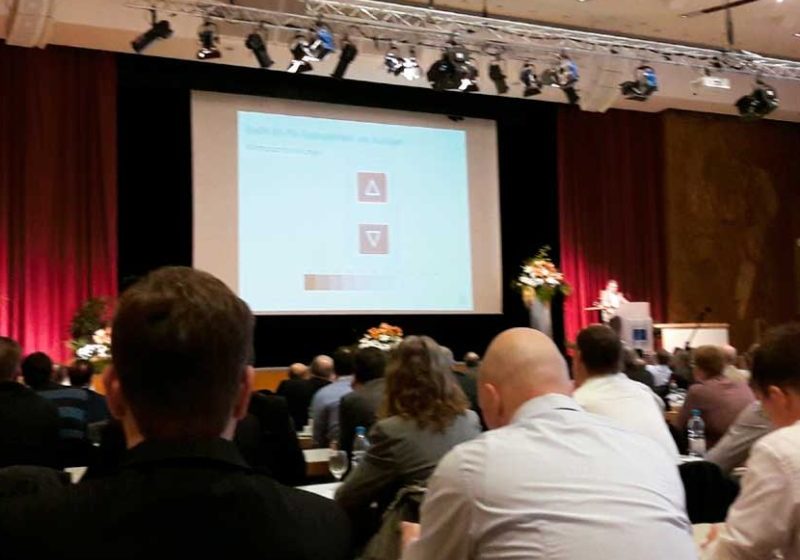“Making It Work”
Jun 1, 2017

University systems managers throughout the U.S. agree: aging equipment (and, often, a whole lot of it), higher rates of vandalism and heavy use mean that taking proper care of their elevator systems is critical to ensure fast, efficient travel and, above all, passenger safety. This can be challenging, however, in an era of shrinking budgets and ever-changing technology. In this regard, the issue of in-house versus contract maintenance for campus elevator systems “always has been and always will be” an issue, says Terri Flint, Elevator Program manager at the University of Michigan (UM) and president of the nonprofit Elevator U. Some universities use outside contractors almost exclusively for both maintenance and new installation, while others take a hybrid approach, dividing work between an in-house team and outside contractor(s). Some have in-house teams that have been in place for years.
A hybrid system is used at UM, and Flint says she believes this can be a viable solution to keeping the campus’s large number of elevators running like a well-oiled machine. At UM, approximately 130 elevators in the system’s large buildings such as hospitals, athletic venues and student unions are handled by an outside contractor. In UM’s case, this is a large OEM. UM’s 11 in-house mechanics take care of the rest, approximately 470 units. This allows the university to “keep tabs on call-backs, maintenance and downtime,” Flint says.
Illinois State University (ISU) in Normal, Illinois, on the other hand, contracts out maintenance and inspections on all its 83 elevators in 53 locations, according to Assistant Superintendent for Building Maintenance Steve Pydynowski. He says this has been the case since he joined the staff 23 years ago.
A few years prior to his coming to ISU, a task force was assembled to consider forming an in-house team to handle routine maintenance, but nothing ever came of it. Since then, the university has followed state guidelines that require multiyear contracts be signed through the request for proposals (RFP) process. A large OEM emerged successful after the most recent RFP.
On the other end of the spectrum from ISU is the University of Virginia (UVA), where a 340-unit vertical-transportation system has been taken care of by an in-house team for at least 40 years, according to Elevator Maintenance Senior Supervisor Eddie Morris. The team currently has 14 employees, including Morris, and consistently goes “above and beyond” in terms of what needs to be done. “If we contracted out the work, they would likely underbid [what the team charges] to get in the door,” Morris states, “but, eventually, the maintenance would be lacking, because big companies don’t seem to focus on attention to detail anymore.”
Although the in-house system works well for UVA, there are challenges, Morris observes. Among them are insufficient funds to replace or repair aging equipment, particularly in UVA’s medical buildings (which are funded through a different source than the campus proper) and finding talented employees willing to work for a less-than-union wage.
Whatever system a school uses, the issue of money is always present. Lack of money for deferred maintenance, Pydynowski says, has been an ongoing struggle at ISU and other Illinois institutions for several years. “We are all struggling – some universities more than others,” he says, continuing:
“Basically, the State of Illinois is in a financial crisis and has bigger fish to fry. At this point, the state has not had a budget for nearly two years, so the money that should be coming from the state hasn’t been there. Since I’ve been involved in Elevator U, what seems to be a common refrain is that facilities people either have a good system that works on their campus, or they find a way to make it work for them.”
Flint observes that, industry-wide, university elevator work has never been strictly in-house or strictly contract. The way funding is provided and how and when work is performed can affect decisions, she says, describing proprietary versus non-proprietary equipment as a “hot topic.” Proprietary equipment often has a lower upfront cost, making it attractive to schools struggling with limited budgets. However, she says, this can end up being a money drain in the long run:
“The problem comes when special tools or diagnostic software is needed and isn’t supplied to in-house mechanics. That forces a maintenance contract without the option of a competitive bid. The lifecycle cost can escalate quickly if only one contractor can maintain and repair the equipment. Because construction (immediate cost) and maintenance (long-term cost) typically have separate funding sources, the struggle is rarely resolved in favor of maintenance. The long-term cost is not seen quickly enough to impact the construction documents and allow both sides to find a compromise they can deal with.”
Sometimes, budgets are studied and difficult decisions are made. At the University of Minnesota (U of M) Twin Cities, there are 415 units across facilities in Minneapolis and St. Paul, with equipment dating from the 1950s to present day. The last major modernization included approximately 40 units and was completed in 2013, with miscellaneous modernizations occurring since then amid reduced state funding.
It was that climate of diminishing funding that prompted U of M’s decision to change delivery models and go from a hybrid to strictly outsourced system, explains Dan Anderson, U of M Elevator Program manager. All elevator work began being handled by a major national company starting January 1, 2013. “Our customers across campus had to adjust to a new management approach,” Anderson says. “Working relationships between elevator mechanics and customers had to be re-cultivated. Some of our partners campuswide worked through a ‘loss of autonomy’ as we built new relationships with the new delivery model.”
Though this was not the easiest transition the university had to make, practicing smart business is its top priority, Anderson says. “The current model pulled together all the various service-delivery practices and offered an economy of scale for preventative-maintenance costs, billable callbacks, repairs and elective retrofits or improvements,” Anderson states. He echoes Pydynowski in saying that one benefit of having the work handled by a big company is that the university can rest assured all the i’s are dotted and the t’s are crossed when it comes to evolving state codes and regulations. Larger companies often have teams of people solely responsible for acquiring all the proper state registrations and keeping training current.
For the past 20 years, U of M has required all modernized or new equipment to have limited proprietary components. Currently, approximately 15-20% of U of M’s units were manufactured by OEMs, and all are maintained by the current vendor. Modernizations and new builds are historically performed by local independents, and occasionally by OEMs.
Anderson describes U of M’s current contract (obtained through competitive bid) as fair. He elaborates:
“One big positive of the current vertical-transportation service delivery model is consolidated cost accounting and predictable preventive-maintenance costs over time. The initial, full-service contract with the current vendor was for 30 months. The contract allowed three, one-year extensions, which were negotiated between the university and vendor to occur as such beginning July 1, 2015. In short, we had a fixed preventive-maintenance cost for 30 months and now, via one cost increase, we have a fixed preventive-maintenance cost through June 30, 2018. Our callbacks, elective repairs and improvements are also bound by fixed contractual rates and materials markup during the duration of the contract.”
Anderson says whatever model a university uses, communication is key to “making it work.” At U of M, a core group of facilities and elevator professionals have met almost every week without fail since the contract was first signed back in late 2012. “We continue to find success through information from the elevator mechanics in the field, feedback from our partners across campus and cooperation between our current vendor and Elevator Program management team,” he states.
Get more of Elevator World. Sign up for our free e-newsletter.








